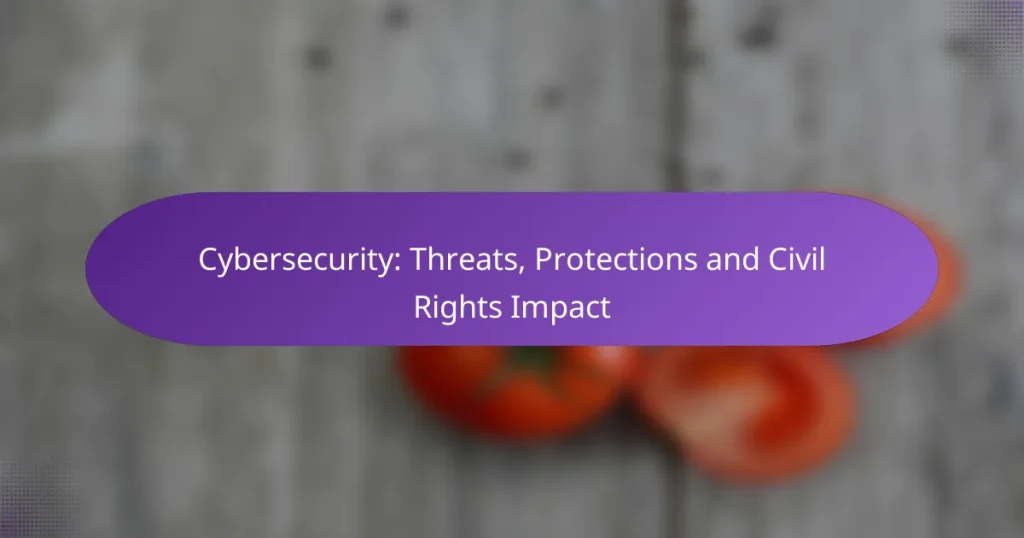In today’s digital age, cybersecurity threats such as malware, phishing, and ransomware pose significant risks to individuals and organizations alike. To effectively combat these threats, a multi-layered security approach that combines technology, training, and robust policies is essential. Additionally, understanding the legal implications of cybersecurity is vital for ensuring compliance and protecting civil rights in an increasingly interconnected world.
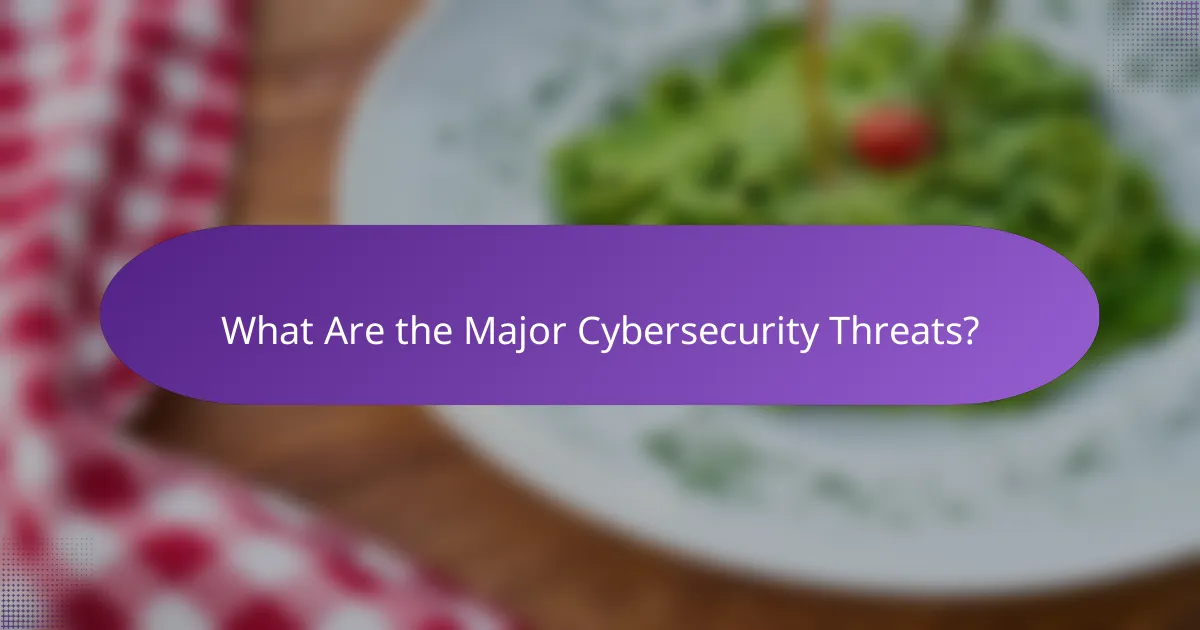
What Are the Major Cybersecurity Threats?
Major cybersecurity threats include malware, phishing, ransomware, insider threats, and DDoS attacks. Understanding these threats is crucial for individuals and organizations to implement effective protections and safeguard sensitive information.
Malware Attacks
Malware attacks involve malicious software designed to disrupt, damage, or gain unauthorized access to computer systems. Common types of malware include viruses, worms, and trojans, which can be delivered through infected email attachments or compromised websites.
To protect against malware, regularly update software and use reputable antivirus programs. Avoid clicking on unknown links and ensure that firewalls are enabled to add an extra layer of security.
Phishing Scams
Phishing scams are deceptive attempts to obtain sensitive information, such as usernames and passwords, by masquerading as trustworthy entities. These scams often occur via email, where attackers create fake websites that resemble legitimate ones.
To avoid falling victim to phishing, scrutinize email addresses and look for signs of suspicious content. Implementing two-factor authentication can also help mitigate risks associated with compromised credentials.
Ransomware Incidents
Ransomware incidents involve malicious software that encrypts a victim’s files, demanding payment for the decryption key. This type of attack can severely disrupt business operations and lead to significant financial losses.
To defend against ransomware, maintain regular backups of important data and ensure they are stored offline. Educate employees about recognizing suspicious activities and consider investing in security solutions that detect and block ransomware threats.
Insider Threats
Insider threats occur when individuals within an organization misuse their access to sensitive information, either maliciously or unintentionally. This can include employees, contractors, or business partners who may leak data or inadvertently expose systems to risks.
To mitigate insider threats, implement strict access controls and monitor user activity. Conduct regular training sessions to raise awareness about data security and the importance of safeguarding sensitive information.
Distributed Denial of Service (DDoS)
DDoS attacks aim to overwhelm a network, service, or website by flooding it with excessive traffic, rendering it unavailable to legitimate users. These attacks can disrupt business operations and damage reputations.
To protect against DDoS attacks, consider using content delivery networks (CDNs) and DDoS mitigation services that can absorb and filter malicious traffic. Establishing a response plan can also help organizations quickly address and recover from such incidents.
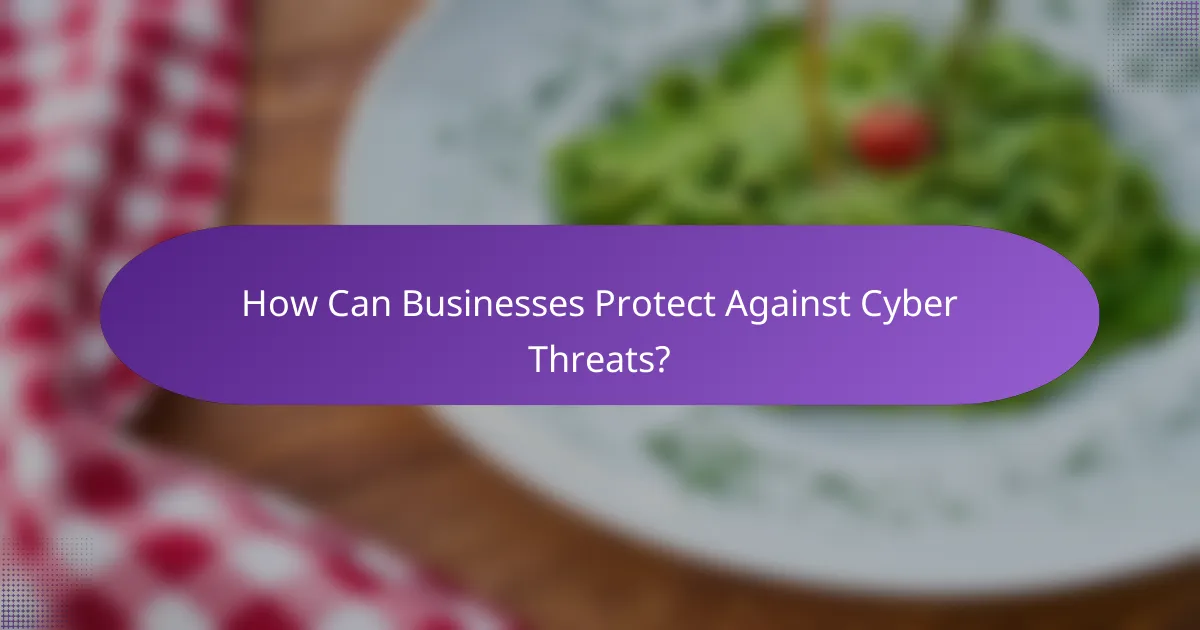
How Can Businesses Protect Against Cyber Threats?
Businesses can protect against cyber threats by implementing a multi-layered security approach that includes technology, training, and policies. Key strategies involve using firewalls, keeping software updated, training employees, and employing data encryption practices.
Implementing Firewalls
Firewalls act as a barrier between a trusted internal network and untrusted external networks, filtering incoming and outgoing traffic based on predetermined security rules. They can be hardware-based, software-based, or a combination of both, and are essential for blocking unauthorized access.
When implementing firewalls, businesses should regularly review and update their rules to adapt to new threats. Consider using next-generation firewalls that provide advanced features like intrusion prevention and application awareness for enhanced protection.
Regular Software Updates
Regular software updates are crucial for maintaining cybersecurity as they often include patches for known vulnerabilities. Businesses should establish a routine schedule for updates to ensure all systems and applications are secured against the latest threats.
Utilizing automated update tools can streamline this process, reducing the risk of human error. It’s also important to prioritize updates for critical systems and applications that handle sensitive data.
Employee Training Programs
Employee training programs are vital for fostering a security-aware culture within an organization. Regular training sessions should cover topics such as recognizing phishing attempts, safe internet practices, and proper data handling procedures.
Consider implementing simulated phishing attacks to test employee responses and reinforce learning. Providing ongoing education ensures that employees remain vigilant against evolving cyber threats.
Data Encryption Practices
Data encryption protects sensitive information by converting it into a coded format that can only be read by authorized users. Implementing encryption for data at rest and in transit is essential for safeguarding against data breaches.
Businesses should adopt strong encryption standards, such as AES-256, and ensure that encryption keys are managed securely. Regularly reviewing encryption policies and practices helps maintain compliance with regulations and enhances overall data security.
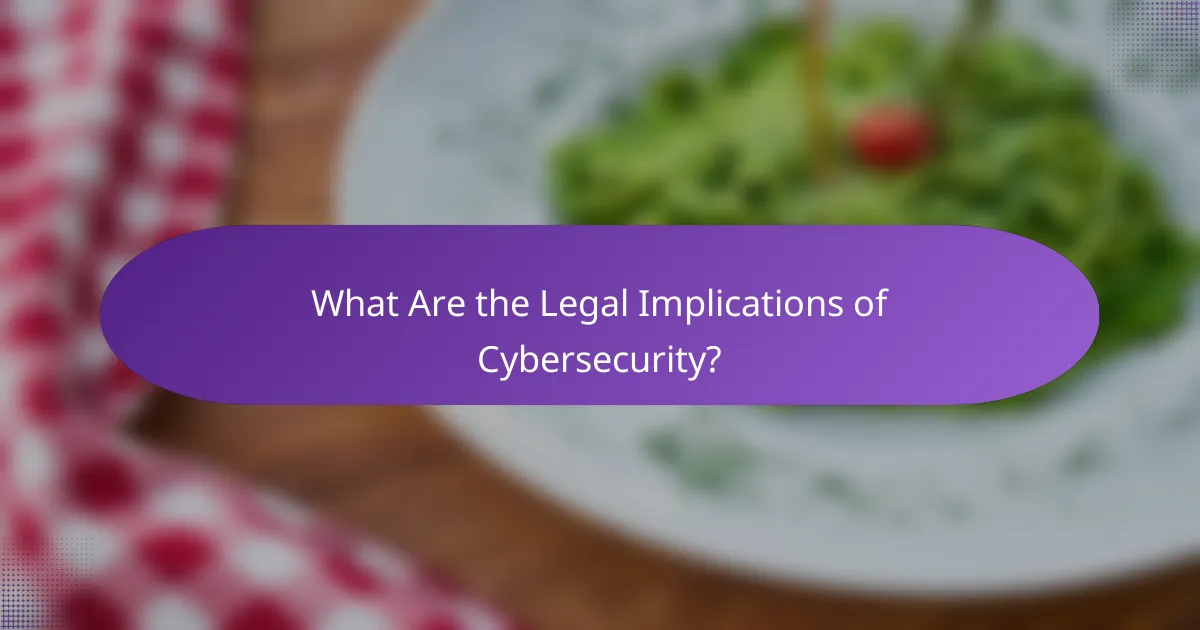
What Are the Legal Implications of Cybersecurity?
The legal implications of cybersecurity encompass a range of laws and regulations that govern how organizations must protect data and respond to breaches. Understanding these implications is crucial for compliance and for safeguarding civil rights in the digital landscape.
Data Protection Laws
Data protection laws are designed to ensure that personal information is handled responsibly and securely. In the European Union, the General Data Protection Regulation (GDPR) sets strict guidelines on data collection, processing, and storage, imposing heavy fines for non-compliance. In the United States, various state laws, such as the California Consumer Privacy Act (CCPA), provide similar protections but vary significantly in scope and enforcement.
Organizations must be aware of the specific data protection laws applicable in their jurisdiction, as these laws dictate how they should manage customer data. For example, businesses operating in the EU must appoint a Data Protection Officer (DPO) if they process large amounts of personal data, while U.S. companies may need to implement different measures based on state regulations.
Compliance Requirements
Compliance with cybersecurity laws requires organizations to adopt specific practices and protocols to protect sensitive information. This may include conducting regular risk assessments, implementing data encryption, and ensuring employee training on data security practices. Failure to comply can result in legal penalties and damage to reputation.
To maintain compliance, organizations should establish a clear cybersecurity policy that outlines their data protection strategies and response plans. Regular audits and updates to these policies are essential to adapt to evolving legal standards and emerging threats. Additionally, engaging with legal experts can help navigate the complexities of compliance requirements across different regions.
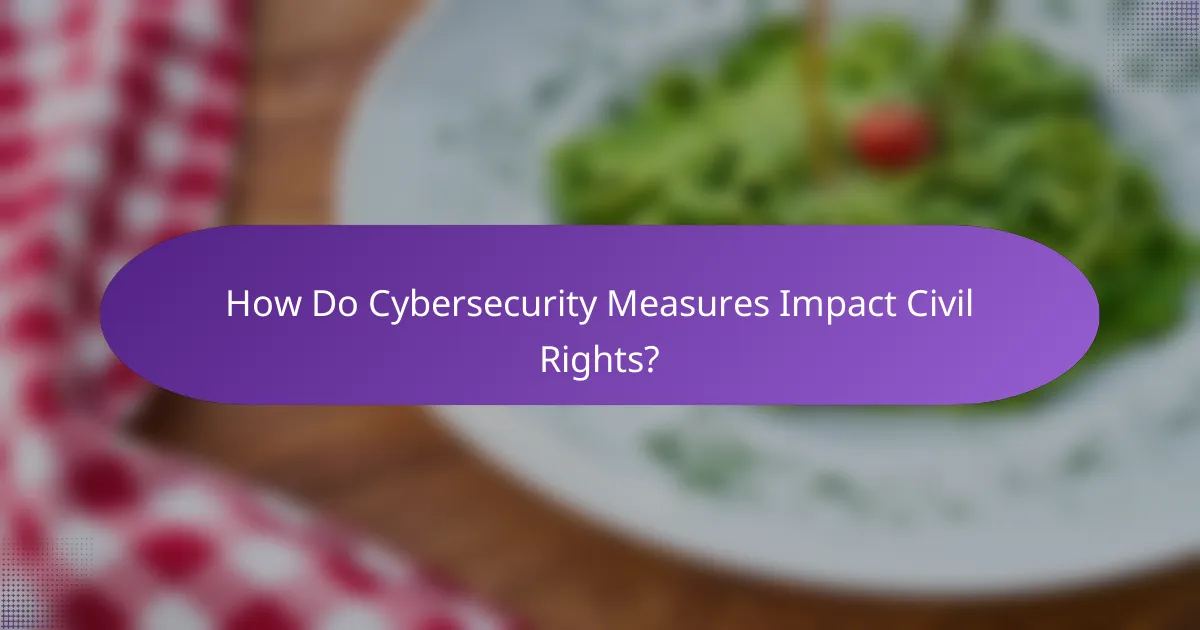
How Do Cybersecurity Measures Impact Civil Rights?
Cybersecurity measures can significantly affect civil rights by balancing the need for security with individual freedoms. While these protections aim to safeguard personal data and national security, they can also lead to infringements on privacy and civil liberties if not implemented with care.
Privacy Concerns
Privacy concerns arise when cybersecurity measures involve extensive data collection and monitoring. Organizations may gather personal information to protect against threats, but this can lead to unauthorized surveillance and data misuse. Individuals must be aware of how their data is collected, stored, and shared.
To mitigate privacy risks, individuals should review privacy policies and understand their rights under regulations like the General Data Protection Regulation (GDPR) in Europe. Opting out of non-essential data collection and using privacy-focused tools can help protect personal information.
Surveillance Issues
Surveillance issues are a critical aspect of cybersecurity, particularly regarding government and corporate monitoring practices. While surveillance can enhance security, it often raises ethical questions about the extent of monitoring and its impact on civil liberties. Citizens may feel their freedoms are compromised when surveillance is pervasive.
To address surveillance concerns, transparency is essential. Governments and organizations should disclose their surveillance practices and ensure oversight mechanisms are in place. Engaging in public discourse about the balance between security and civil rights can also foster accountability and protect individual freedoms.
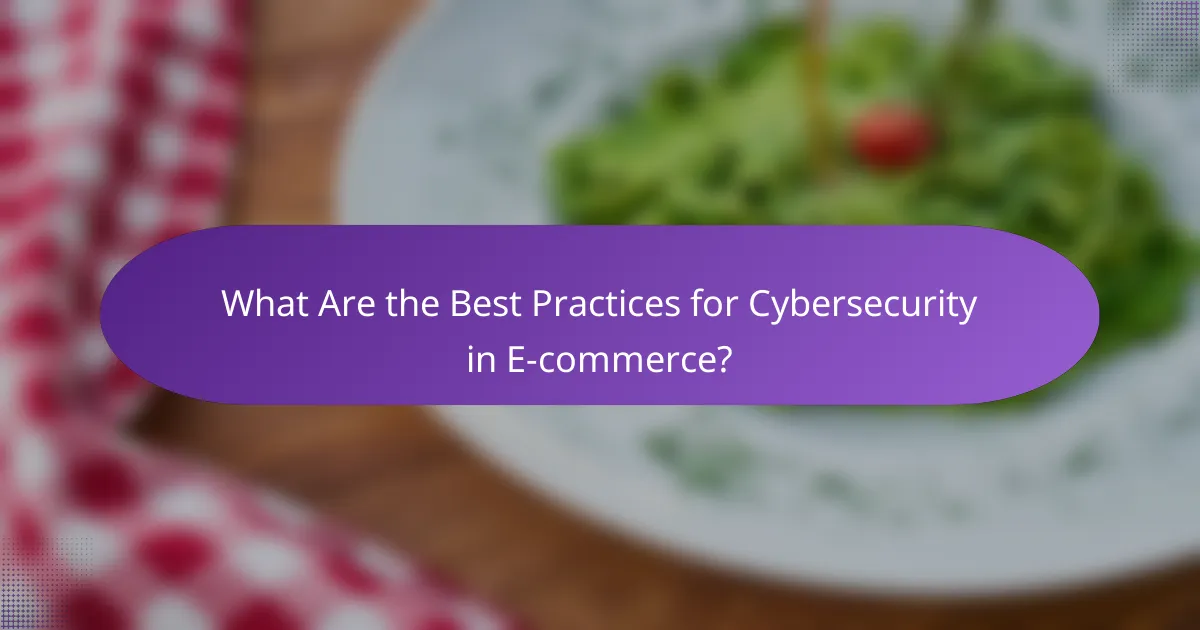
What Are the Best Practices for Cybersecurity in E-commerce?
Best practices for cybersecurity in e-commerce focus on protecting sensitive customer information and ensuring secure transactions. Implementing robust security measures not only safeguards your business but also builds trust with your customers.
Secure Payment Gateways
Secure payment gateways are essential for facilitating safe online transactions. They encrypt sensitive information, such as credit card details, during the payment process, minimizing the risk of data breaches.
When selecting a payment gateway, consider options that comply with Payment Card Industry Data Security Standards (PCI DSS). Popular choices include PayPal, Stripe, and Square, which offer various features and fee structures to suit different business needs.
SSL Certificates
SSL certificates are crucial for establishing a secure connection between your website and its users. They encrypt data exchanged on your site, ensuring that sensitive information remains confidential.
To implement SSL, purchase a certificate from a trusted provider and install it on your server. Websites with SSL are marked with “https://” in the URL, which helps reassure customers about the safety of their transactions.
Customer Data Protection
Protecting customer data involves implementing measures to secure personal and financial information. This includes using strong passwords, regularly updating software, and conducting security audits.
Consider employing data encryption and access controls to limit who can view sensitive information. Additionally, educate your staff about cybersecurity best practices to reduce the risk of human error leading to data breaches.
